|






|
|
How to build roman pteruges
Traduzione in italiano
1 | 2 | 3
|
Pteruges can be considered as one of the main constants of what we could erroneusly define "uniformity" in Roman Army. These stripes, more or less coloured, can be found in the roman archeology belonging to the whole roman history because pteruges come from the hellenic tradition and end only with the East Roman Empire.
|
|
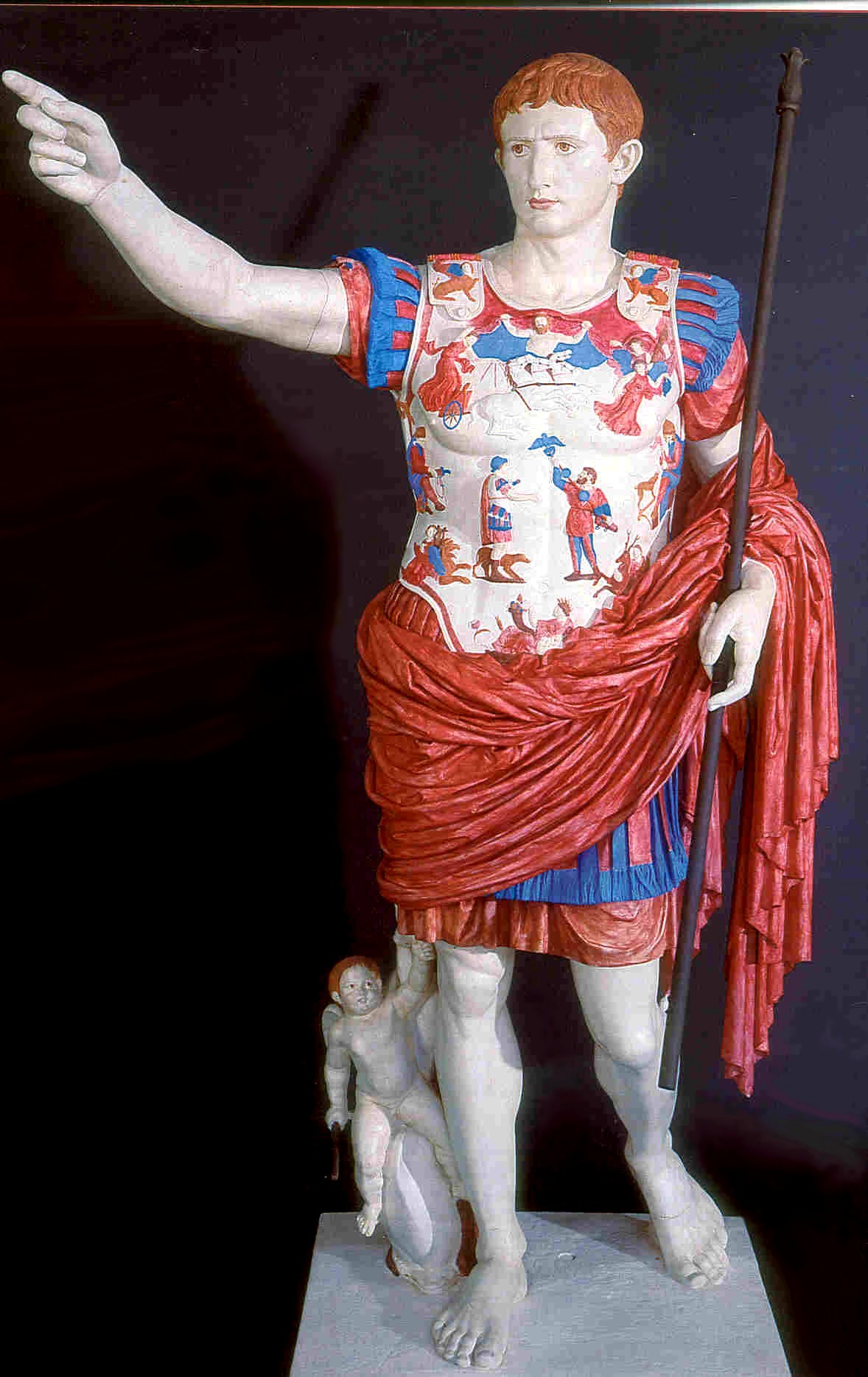
Pic.1. Coloured pteruges from the Augustus of Prima Porta statue.
Depicted colours are retrieved from infrared analisys.
|
Evidences
Pteruges are very common elements in the roman art. With these stripes, that to modern eyes appear somehow funny, the romans loved to make them represented in order to recall some very ancient equipments dating back up to 1000BC.
Looking at the multiples examples visible everywhere in the mediterranean museums it appears very clearly that pteruges were not simply used by emperors, but also by tribunus, cunsuls, centurions and also optiones. This fact allows us to think that pteruges were a very important piece of roman panoplia. This undoubtable importance is probably derived just from the tradition that, as well known, is much important for soldiers from every era and also a strong cultural factor.
The pteruges are associated basically to any kind of roman lorica romana, also, even if more rare, with the segmentata.
|
|
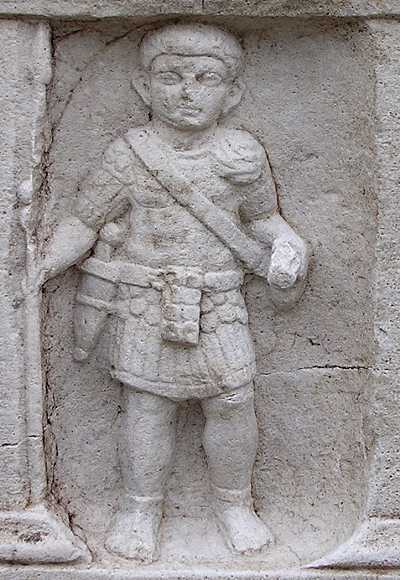
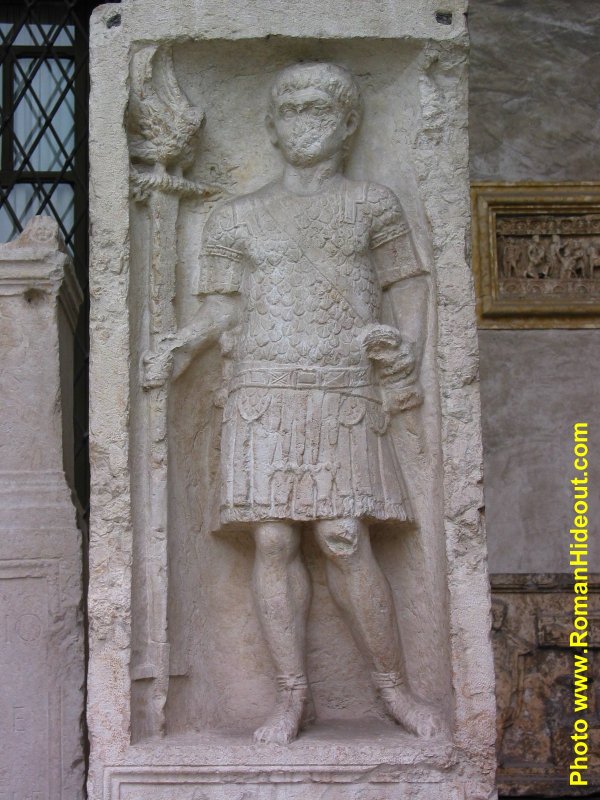
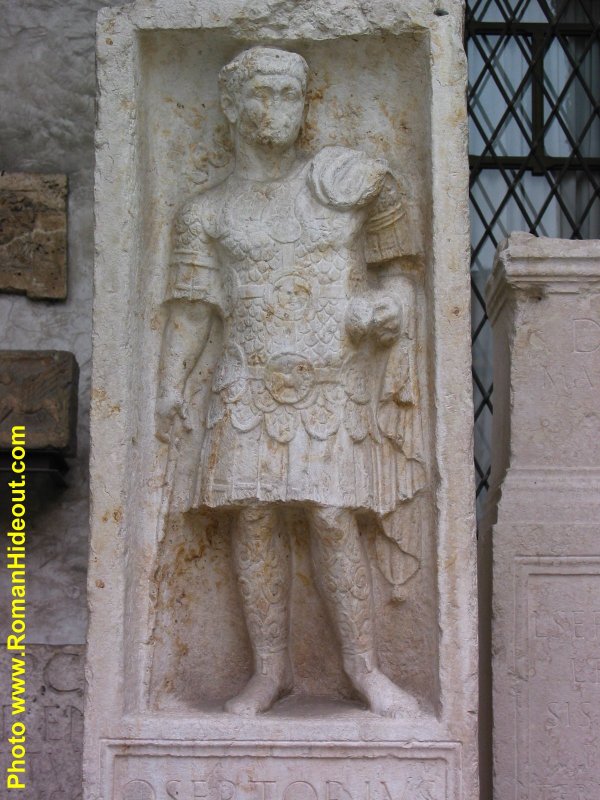
Pic.1-3. From the left: an Optio from the roman classis on a tombstone found in 2005 (III-V cent. AD); a Signifer (Aquilifer) and a Centurio with squamatae armours (I cent. AD).
In the first case pteruges don't end with fringes.
|
Origins and evolutions
As previously stated the origin of this element is ancient and probably has been invented by hellenic warriors that obtained them making vertical cuts in their linothorax, the linen armours, in order to enhance the legs mobility.
In the roman era the pteruges seem to become just ornamental elements, loosing the protection feature of their greek origin.
In the Middle Age pteuges seem to return to a protective function as example around the neck.
|
|
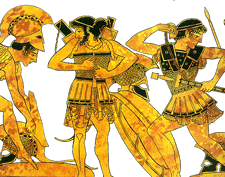
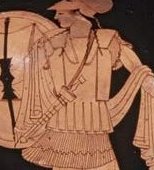
Pic. 3a e 3b. Left: Greek hoplites while wearing linothorax reinforced with metal addition. Right: a linothorax with more evident cuts.
|
With the invention of fire weapons these kind of protections became unuseful, but fall of XVIII century we see something that we could consider the final evolution of the pteruges: the epaulette.
|
|
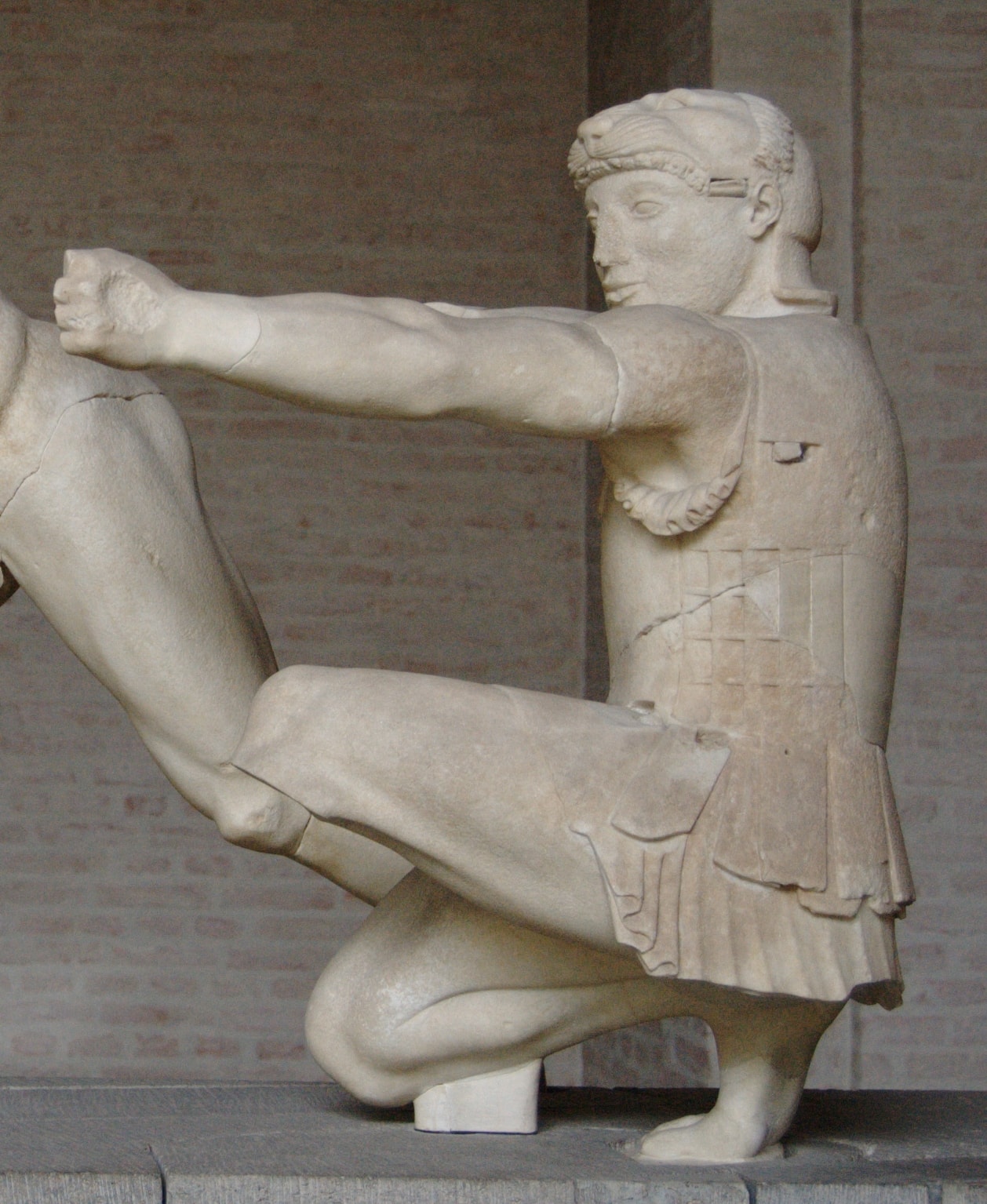

Pic. 3c e 3d. Left: statue from the Munich Glyptothek in Germany. It is much evident the function to allow the leg mobility. Right: a portrait of Horatio Nelson with two epaulette on the shoulders.
|
Materials
For any reconstructor or reenacter is very important to find out which was the material used to build them. The tradition developed around pteruges in the romantic era (XIX century) suggests they were made of leather. This knowledge probably has its origins in some too fast observations of the roman statuary.
Of course we cannot exclude they were also done with leather, but a further observation of some details from sculptures would exclude leather at least as default, favouring textile such as linen.
In addition it is known that this particular element is linked to the the story of the hellenistic linothorax, the greek linen armour, in fact pteruges were the terminal part of it.
We could also think that, being an important ornamental element, the pteruge was particularly well made in its aspect, using precious fabrics and brilliant colours. This detail is also confirmed from the traces fo colour still present on some sculptures and make think that such expensive fabrics would be worn mainly by emperors and consuls rather than rich soldiers.
Unfortunately the archeology cannot help us very much, and the only linothorax made of linen found in Micenae (Greece) during 1970-80is still waiting for publication1.
In the first serie of examples (below) is very clear from the "movement", from the softness of lines and from the thickness represented by sculptors, that the consistence impression is given by textile material. In some cases pteruges report rubbings that are typical of textile in particularly of linen.
During 2012 some linen fragments from Masada were identified as pteryges2 and this could be the last word about materials.
|
|
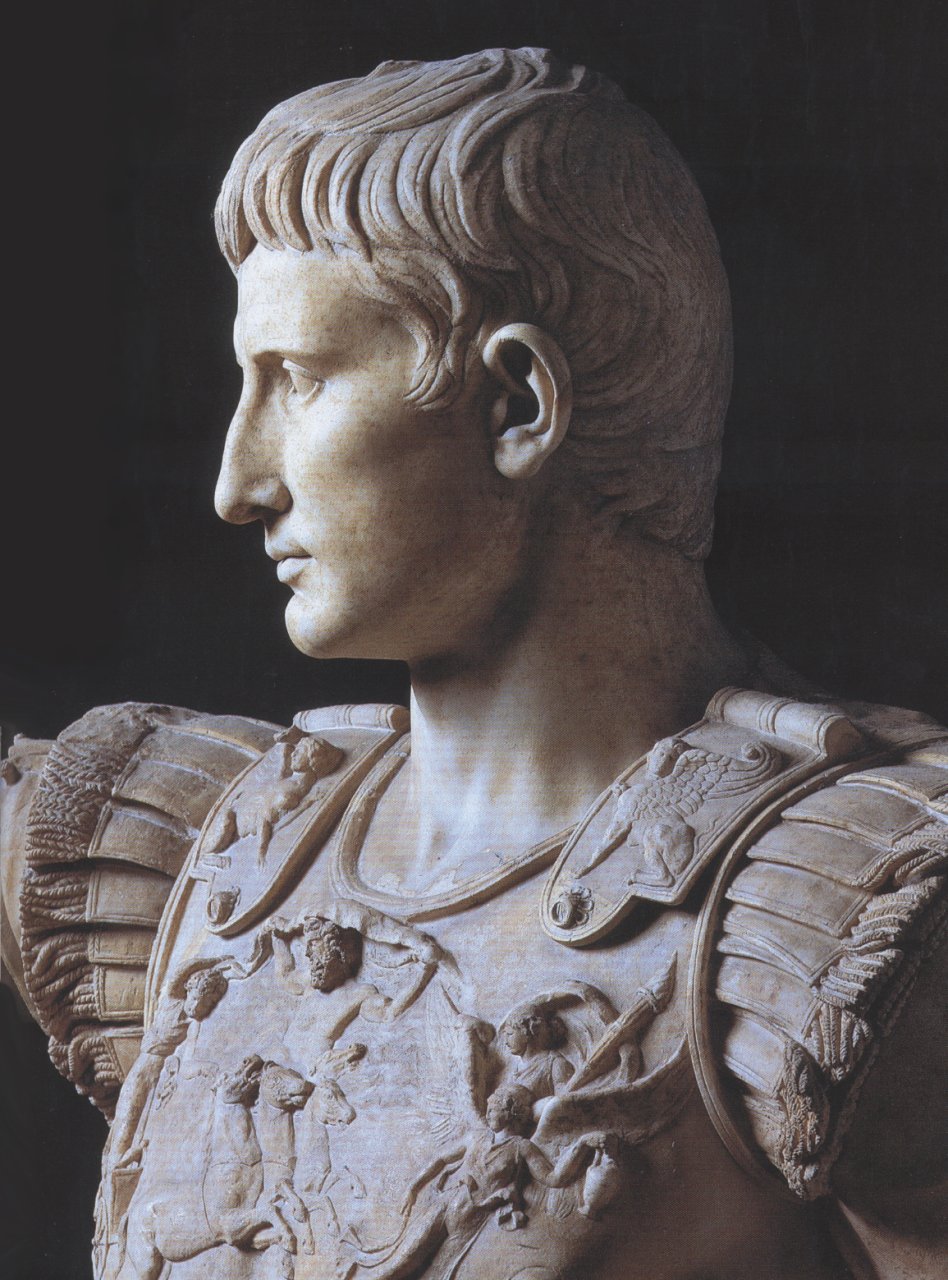
TravisLeeClark_MuseiCapitolini_loricatacapitdeta.jpg)
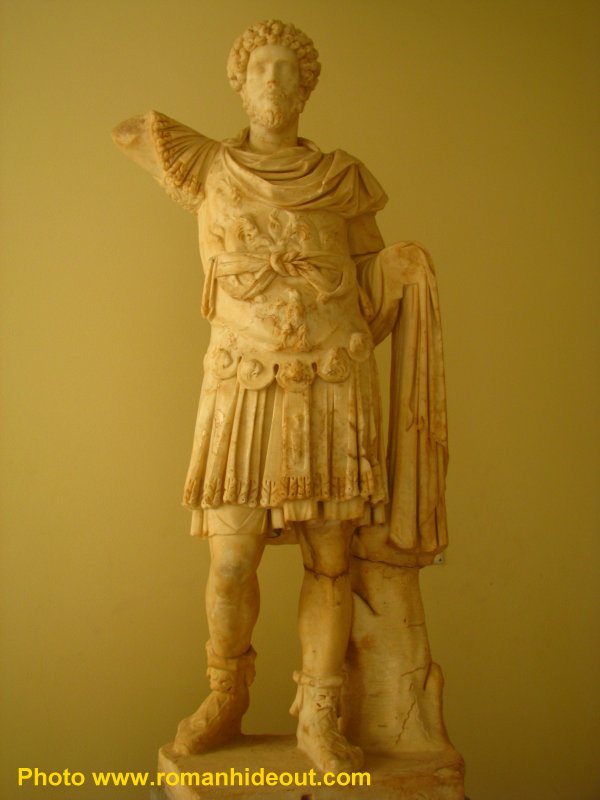
Pic.4-6. From the left: the Prima Porta Augustus, loricato from the Musei Capitolini2 and loricato from Leptis Magna Museum (Lybia).
These examples suggest that the load of the pteruges is much more relevant of leather, an effect that can be achieved using multiple layers of linen as for the linothorax.
|
|
In some cases sculptures have kept some details that shows with no doubt textile material.
From these examples we can affirm without any doubt that pteruges were (also) made of textile. Now we need to understand how many layers are needed to reach thickness similar to the one depicted on the numerous examples. I will try to respond to this in the next pages.
Pic.9 on the right: Statue of Antoninus Pius at the Archeological Museum in Naples. Textile tissue that continues on the restored portion.
|
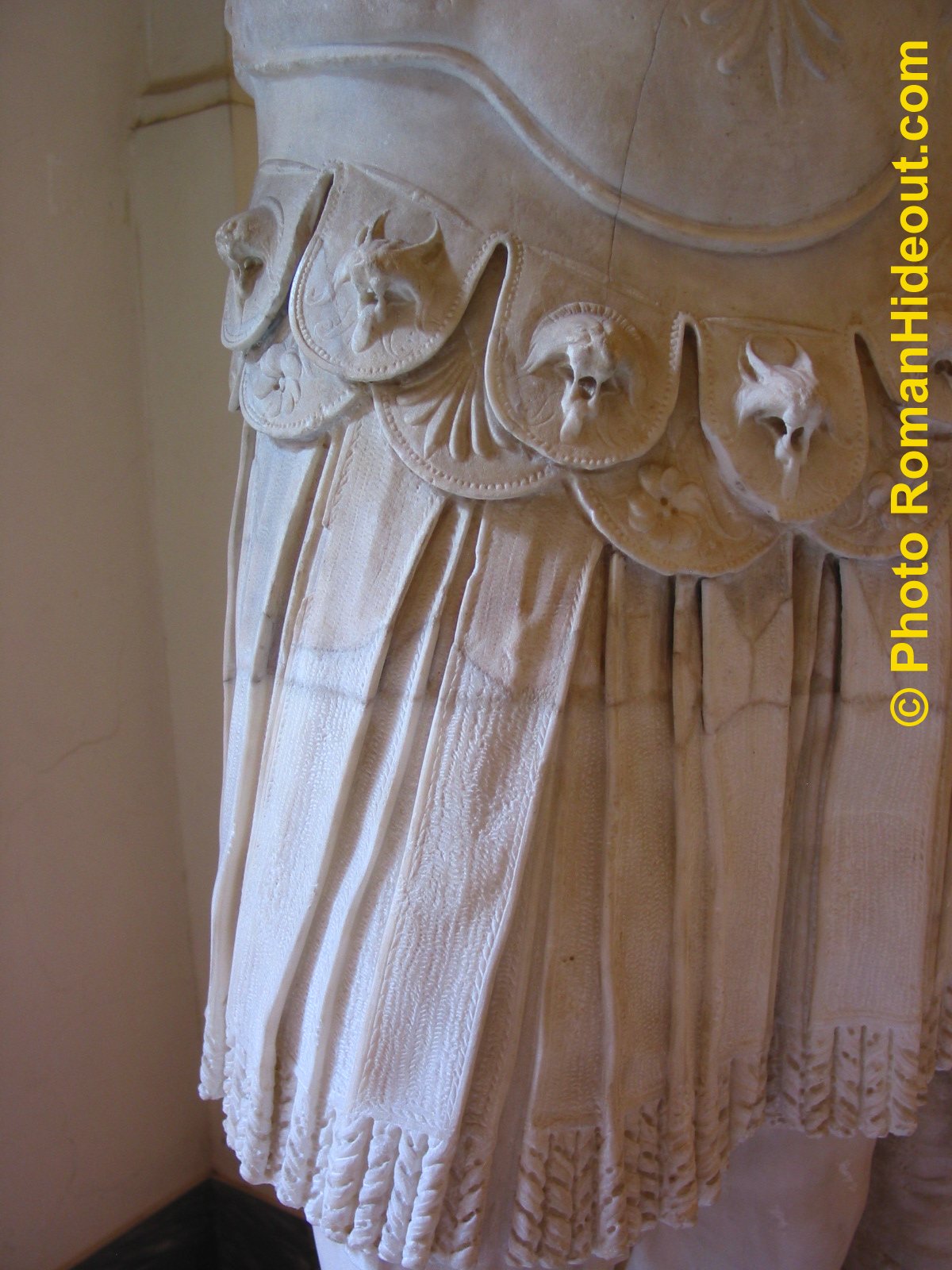
|
Colours
About the colouring too we have enough documentation thanks to the artistic diffusion. Traces found are showing the white as the favourite colour, but also red, yellow and green are visible on an amount of reliefs, tombstones and cinerary urns.
|

Pic.10. Relief form a cinerary urn with evident traces of white colouring on the pteruges on the central character (Archeological Museum of Nimes - France).
|
Functionality
It is easy to think at the pteruges in roman time as just an aesthetic addition, but in the past they could be a piece of the armour and have a protecting function.
I try to give a couple of responses to this clue. In the hellenic gold age, pteryges were the terminal part of the linen protection (linothorax). These protections seems were done by glueing togheter many layers of linen to get strongness. The protection was probably extended to the pubic and the first part of the leg, but this probably was limiting the mobility and creating many troubles to horse riding. It could be possible that in the arcaic times a simple solution was to just cut the linen to get some flaps that were possible to curve. Of course this idea had to be perfectioned, but this is known.
It must be recorded that the examples here reported are just a very small part of the visible examples, sometimes also funny for our modern eyes.
In addition I could affirm that evolved pteruges were possibly used to increase the subarmalis protection. This is a bizarre idea, but in some examples as in the Prima Porta Augustus, the number of overlapped pteruges (up to four) seem to have this function.
|

Pic.11. Augustus of Prima Porta statue. Four layers of very short pteruges are visible on the shoulder.
The impression is that they were used to increase the aspect of the subject, but also to help him to support the heavy armour.
|
Notes
1 - J.Hoffman (2005)
2 - Hero Granger-Taylor (2012)
3 - © T.L. Clark (2006)
Further news about Lorica Muscolata are present on its own web site.
Traduzione in italiano
1 | 2 | 3





|












TravisLeeClark_MuseiCapitolini_loricatacapitdeta.jpg)


